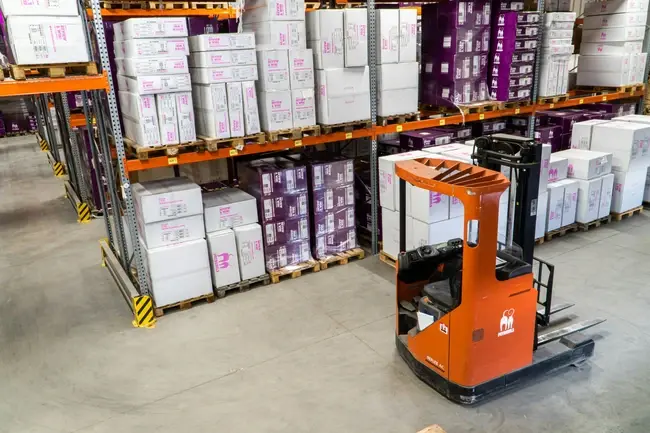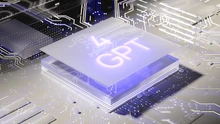
Internet of Things (IoT) devices are making waves in various industries by enabling smarter operations. For many companies, IoT is innovating inventory management, helping them tackle stock discrepancies and inefficiencies.
Businesses are increasingly investing in this technology, which helps them manage their goods and strengthen the supply chain.
The Role of IoT in Inventory Control
IoT is significantly improving how businesses manage and optimize their stock. Devices containing IoT technology provide real-time tracking of inventory, enabling companies to monitor their goods accurately and efficiently. This enhanced visibility reduces stockouts and other related issues, ensuring companies continuously meet customer demand.
One key benefit of IoT in inventory control is the reduction in inventory inaccuracies. Studies have shown that this technology can decrease this issue by 20%-30%. This is due to companies always knowing what to expect with their inventory levels. They can obtain an exact count of stock 24/7 and receive notifications when stock levels are low.
By automating such tasks, businesses can reduce costs and improve operational efficiency. Automating stock counting and order fulfillment helps companies save time and allocate resources more effectively.
Additionally, the data these smart devices collect enables them to gain insights into inventory trends and patterns. As such, the software platform it is connected to can offer real-time data analytics for faster decision-making to further optimize inventory control.
1. RFID
Radio Frequency Identification (RFID) technology is one of inventory control's most impactful IoT devices. RFID automatically identifies and tracks tags attached to objects using electromagnetic fields. Each tag contains electronically stored information that an RFID reader can read, even from a distance.
This technology greatly improves inventory control by providing real-time data on stock levels and item locations. It eliminates the need for manual stock checks, reducing human error. As a result, businesses can achieve greater accuracy and efficiency in inventory processes.
One industry that uses RFID technology is retail. Retailers utilize smart shelves containing RFID tags to continuously monitor stock levels and trigger restocking when items run low. It has become a leading solution in inventory management, accounting for 45.67% of the market share in 2023.
2. Bluetooth Technology
Bluetooth is a commonly used inventory management technology known for its wireless communication capabilities. It enables devices to connect and exchange data over short distances and can be useful in tracking stock. Companies use this technology as the communication standard for billions of devices using beacons and sensors. These devices continuously send data about the location and status of the items to a central system, allowing for improved inventory tracking.
Bluetooth’s signal is strong, and the devices are easy to implement and scale. That is why there is a wider adoption of it for businesses of all sizes. It is cost-effective to deploy without the need for extensive infrastructure changes. Companies can easily integrate it with existing systems, providing immediate benefits in inventory visibility and control.
3. 5G UC
5G Ultra Capacity (UC) is a groundbreaking technology advancing inventory management. Operating on 2.5 GHz frequencies, 5G UC provides enhanced connectivity and faster data transmissions.
Its high-speed and low-latency capabilities allow businesses to connect numerous IoT devices. It supports the continuous transfer of data, helping companies achieve near-instantaneous communication. This ability is especially crucial in dense environments within warehouses and distribution centers.
With its strong frequency, 5G UC ensures reliable connectivity in areas with heavy network traffic. As a result, companies can maintain accurate inventory levels, reducing mismanagement and discrepancies.
4. Near Field Communication
Near-field communication (NFC) is another transformative IoT device. It is a short-range wireless communication technology that allows devices to exchange data when they are close to each other. Most know this technology for its contactless payments, but it also offers numerous benefits in inventory control.
For instance, companies can use it to tag items with NFC-enabled labels or stickers. These tags store item information, such as product details, stock levels and location. When an NFC-enabled device is close to the tag, it can instantly read and update the information stored on it.
Unlike other wireless technologies, NFC is easy to implement with minimal investment. This makes it attractive for businesses looking to save money while enhancing their inventory management processes. However, it also saves time by providing instant updates. As customers purchase an item, their status instantly changes in the software system to notify companies of replenishment.
5. Long-Range Technology
Long-range technology — such as Long Range (LoRa) and Low Power Wide Area Networks (LPWAN) — is helping inventory management by providing extensive coverage and connectivity for IoT devices. As the name suggests, these technologies support long-range communication with low power consumption, making them ideal for large-scale inventory management applications.
Therefore, monitoring large amounts of inventory becomes seamless for warehouses. Devices containing LoRa or LPWAN can transmit data over several miles, ensuring the inventory information is accessible in real time.
Utilizing IoT for Future-Ready Inventory Control
IoT technologies provide several solutions to logistics and supply chain management challenges. When companies adopt these innovations, they can optimize their inventory, reduce costs and build seamless processes. IoT technology is the future of inventory control, so utilizing it is essential to staying competitive in an ever-evolving market.












